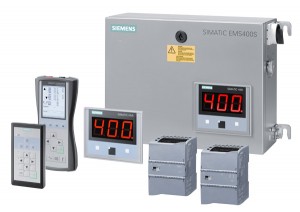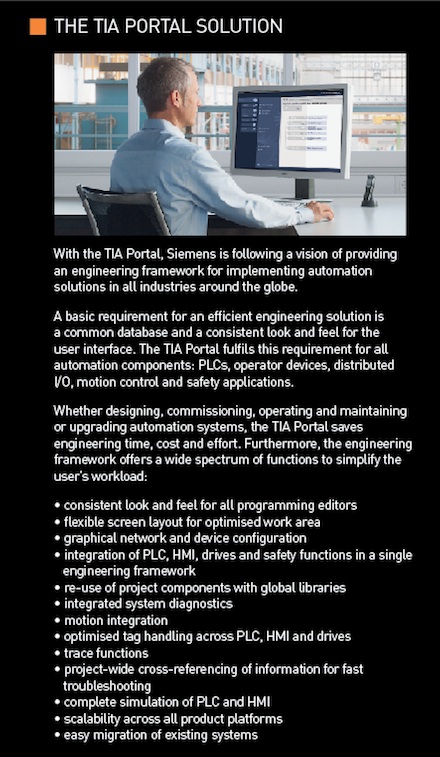
Flexibility and cost savings are just two advantages of the latest Siemens monorail technology, writes Thorsten Riemer, EMS product manager at Siemens
 The US automotive market is rebounding nicely along with its economy. Second only to China in numbers, US automotive production is expected to achieve more than 17m units in 2015, levels that have not been seen since before 2008. Not only are Americans buying these new cars, but they are also increasing their overall car ownership, revealed by the all-time high number of vehicle registrations. This goes to show that Americans love their cars.
The US automotive market is rebounding nicely along with its economy. Second only to China in numbers, US automotive production is expected to achieve more than 17m units in 2015, levels that have not been seen since before 2008. Not only are Americans buying these new cars, but they are also increasing their overall car ownership, revealed by the all-time high number of vehicle registrations. This goes to show that Americans love their cars.
In this highly dynamic market, the needs and preferences of car buyers are changing and as a consequence new vehicle segments appear. This creates a new challenge for automotive manufacturers to innovate fast and quickly bring new models into these segments. Vehicle manufacturers must be in a position to meet this growing demand, particularly for individually customised products, by creating highly flexible production environments. In addition, rising labour costs mean that manufacturers have to raise the level of automation in their factories. Increasing importance is also being attached to occupational safety and ergonomic workplace design.
The volatile and dynamic automotive market, combined with the fact that new players are being introduced onto the market every year, has created the need for automotive manufacturing to shift from the traditional concept of low-cost manufacturing to the new concept of smart manufacturing based on notions of frugality, flexibility and productivity. These challenges can only be handled effectively in future by implementing smart automation solutions in the production environment. In order to provide manufacturers with optimum support in meeting these challenges, Siemens has come up with a solution that combines proven control systems with innovative communication technology using power rails. The latest advance from Siemens is the Simatic Electric Monorail System (EMS), which was recently unveiled in the US. This is a system suited to both simple and complex automation tasks in production.
Siemens is providing added impetus here with the EMS400S Box, an integrated solution that comes completely ready for operation. It also includes standardised and easy-to-maintain control components.
Standard components with scope for customisation
Overhead conveyors are one of the most important conveying systems used in the automotive industry, permitting the efficient transportation, sorting, storage, buffering and positioning of goods. However, the various functions they perform call for precise co-ordination of a large number of complex and interacting processes. This requires the use of efficient controlling technology, which Siemens offers in the shape of its Simatic EMS400S.
The EMS400S system consists of a mobile and a stationary unit, both based on standard components. The main components of the mobile unit are fully integrated in the carrier controller and are ready to use. This controller features a Simatic S7-1200 PLC and a communication module for transmitting and receiving signals. The Simatic PLC controls the drive by digital or analogue signals, or via Profinet. A display unit shows the control status.
 The stationary part of the system, the segment controller, comprises one or more Simatic PLCs with communication modules. These can serve any number of rail segments.
The stationary part of the system, the segment controller, comprises one or more Simatic PLCs with communication modules. These can serve any number of rail segments.
The segment controller is served by the higher-level plant controller via Profinet and transforms the commands that it receives into 48V rail signals. These are forwarded to the mobile-carrier controller of the overhead conveyor.
A ready-to-use solution such as the EMS400S Box is ideally suited to standard applications such as overhead conveyor systems on a door line. Depending on the application, the box variants differ in the way the required drive is actuated and also in terms of the internal and external interfaces provided.
Because the EMS system is modular in structure, it can be adapted with the utmost ease to match the particular automation requirements of the plant operator. Alongside communication over the rail to the segment controller, EMS boxes include external interfaces such as analogue outputs and digital inputs and outputs. They also feature a Profinet interface for communication with the sensors, converters and other peripheral devices.
The system software offers the same flexibility as the hardware components. System programming via the Totally Integrated Automation Portal (TIA Portal) allows simple and convenient commissioning of the hardware and software used to implement the application. Siemens also provides application support for the various functionalities of the EMS400S system in the form of function modules.
These can be added to the TIA Portal with a mouse click. Application examples containing ready-to-use functions for overhead conveyors, such as 'run', 'stop', 'lift' and 'lower', are already included in order to minimise the amount of programming that is required.
A holistic communication and automation approach
As Siemens has demonstrated through EMS applications, efficient factory communication entails more than just the mere transmission of ‘bits’. Instead, the company has implemented a holistic solution that provides outstanding reliability and flexibility.
An additional advantage of its approach is the open architecture of the system. Although any Simatic S7 PLC can be used, the system also supports third-party controllers with a Profinet interface. Meanwhile, the use of standardised components means that operators are able to keep a reduced inventory of spare parts.
Siemens also takes a holistic approach when it comes to automation and the EMS400S system offers an array of other benefits above and beyond flexible plant control. For example, the controller takes care of workplace optimisation functions such as carrier height adjustment or remote control of the system by factory staff. These added functions help to satisfy demands for ergonomic working conditions in automotive manufacturing.

One large US and two premium German car manufacturers are already using the Siemens EMS system and are planning worldwide roll-outs. In all cases, the new controller has led to a reduction of cycle times and enabled the manufacturers to achieve significantly improved plant ergonomics.
They have also benefited from a standardised control concept through a single supplier, because the components used in the carrier, the rail segment and the overall plant are all from Siemens. John Billings, VP of Automotive, Aerospace, and Turnkey Solutions at Siemens in the US, firmly believes that local manufacturers, machine builders and system integrators can derive a whole range of benefits from the EMS system. “The main challenge for the local automotive manufacturers is to have a flexible production that is easy to maintain. The use of standard components in our EMS systems permits not only highly flexible automation architectures and solutions, it also simplifies maintenance and repairs,” he says.
“Our system ensures compliance not only with safety rules and regulations but also ergonomic concepts for overhead conveyors. In this way, we are taking a holistic approach to the challenges faced by automotive production. We are confident that this is the right way to achieve greater productivity and efficiency.”








































